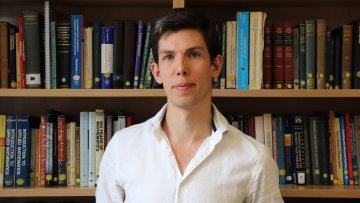15:00
Embedding spaces of split links
Abstract
This is joint work with Corey Bregman. We study the homotopy type of embedding spaces of unparameterised links, inspired by work of Brendle and Hatcher. We obtain a simple description of the fundamental group of the embedding space, which I will describe for you. Our main tool is a homotopy equivalent semi-simplicial space of separating spheres. As I will explain, this is a combinatorial object that provides a gateway to studying the homotopy type of embedding spaces of split links via the homotopy type of their individual pieces.


